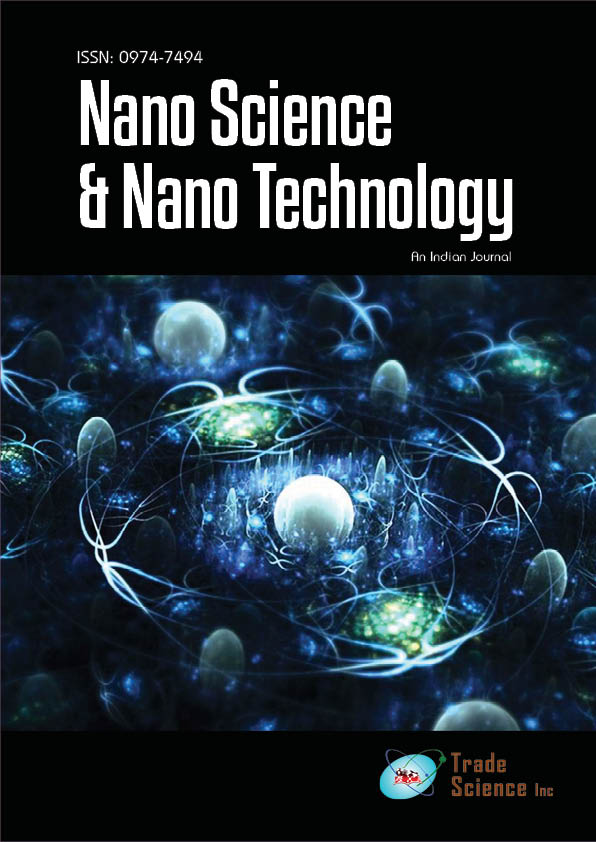Current opinion
, Volume: 16( 2) DOI: 10.37532/ 0974-7494.2022.16(2).150Recent Trends in Bone Tissue Regeneration Using Commonly Used Natural and Synthetic Polymer Nanocomposites
- *Correspondence:
- Melody ColeEditorial Office, Nanoscience & Nanotechnology: An Indian Journal, UK.,E-mail: info@tsijournals.com
Citation:Cole M. Recent Trends in Bone Tissue Regeneration Using Commonly Used Natural and Synthetic Polymer Nanocomposites. Nano Tech Nano Sci Ind J. 2022; 16(2):150.
Abstract
Minerals make up the majority of bone, which is connective tissue. It serves various vital tasks in the organism, including protection, movement, calcium and phosphate storage, housing for bone marrow, and maintaining structural integrity. The need for functional bone grafting procedures is steadily expanding across the world. Approximately $45 billion is spent each year on the care of approximately 15 million individuals with bone disorders, including 1.6 million fractures caused by trauma and 2 million osteoporotic bone abnormalities. In the United States, around 1.6 million people get bone grafting surgeries each year, costing $2.5 billion. Bone Tissue Engineering (BTE) is a paradigm that tries to successfully include bone regeneration at the defect site of the host while avoiding extra issues such as donor site morbidity, immunogenicity, and poor vascularization. Osteogenic cells generate the bone tissue matrix, a biocompatible framework, or scaffold, made of bioactive materials that mimic the ECM of the bone, vascularization that provides mass transport of nutrients and wastes, and morphogenetic signals that direct the cells are the four key components of BTE. A biomaterial's purpose is to aid tissue regeneration at the defect location and eventually be "resorbed and replaced" with freshly created bone tissue over time.
Introduction
Minerals make up the majority of bone, which is connective tissue. It serves various vital tasks in the organism, including protection, movement, calcium and phosphate storage, housing for bone marrow, and maintaining structural integrity. The need for functional bone grafting procedures is steadily expanding across the world. Approximately $45 billion is spent each year on the care of approximately 15 million individuals with bone disorders, including 1.6 million fractures caused by trauma and 2 million osteoporotic bone abnormalities. In the United States, around 1.6 million people get bone grafting surgeries each year, costing $2.5 billion.
Bone Tissue Engineering (BTE) is a paradigm that tries to successfully include bone regeneration at the defect site of the host while avoiding extra issues such as donor site morbidity, immunogenicity, and poor vascularization. Osteogenic cells generate the bone tissue matrix, a biocompatible framework, or scaffold, made of bioactive materials that mimic the ECM of the bone, vascularization that provides mass transport of nutrients and wastes, and morphogenetic signals that direct the cells are the four key components of BTE. A biomaterial's purpose is to aid tissue regeneration at the defect location and eventually be "resorbed and replaced" with freshly created bone tissue over time.
Natural polymer
BTE uses polymer-based biocompatible and biodegradable natural materials to provide a bioactive environment and provide the required mechanical support for new bone tissue formation in defect areas. Natural polymers such as collagen, Chitosan (CS), alginate, silk, fucoid, elastin, gelatin, and hyaluronic acid are widely employed in BTE research due to their great biocompatibility and little immunological impact.
Chitin–based nanocomposites
Natural polymers such as chitin may be found in large quantities in the shell crusts of crustaceans. CS is predominantly made up of biodegradable β-(1→4)-linked N-acetyl-D-glucosamine, and D-glucosamine units. CS has been one of the most promising biomaterials in BTE because of its biodegradability and non-toxic nature. The skeleton of CS and the Glycosaminoglycans (GAGs), which speed up a bone repair, have striking similarities. Chemical changes are facilitated by the presence of reactive hydroxyl and amino functional groups. As a result, CS-based nanocomposite materials have gotten more attention in the BTE industry. CS has strong solubility in weakly acidic solutions with a pH below 6.5, unlike its parent, chitin.
Collagen-based nanocomposites
Collagen, an important component of the natural ECM of bones, is organized as fibers in mammals. Collagen may be easily acquired from fish waste such as bones, scales, and skins. Marine materials, such as cuttlefish, jellyfish, marine animal skin and muscles, and fish waste, are preferred over bovine ones, owing to the latter's increased risk of spongiform encephalopathy transmission. Cell adhesion, proliferation, new bone tissue formation, and scaffold biodegradation are all possible with polymer nanocomposites. Furthermore, the incorporation of Nano-fillers into the polymer matrix results in a biomaterial with an appropriate balance of physical, chemical, and biological characteristics that closely resemble the native ECM of the bone.
As a result, optimizing polymer blends is critical for creating scaffold material. The increased cytocompatibility and bioactivity of nanocomposite biomaterials make further study in the field of nanocomposite biomaterials very promising. Bone lining cells are dormant flat-shaped osteoblasts that coat the surfaces of bones when neither resorption nor creation takes place. These cells have a thin and flat nuclear profile, and their cytoplasm spreads down the bone surface, with few cytoplasmic organelles visible, such as rough endoplasmic reticulum and Golgi apparatus profiles. Some of these cells have processes that extend into canaliculi, and gap junctions between neighboring bone lining cells and between these cells and osteocytes have also been seen.
Osteocytes, which make up 90%–95%of total bone cells and have a lifetime of up to 25 years, are the most prolific and long-lived cells. Unlike osteoblasts and osteoclasts, which are classified according to their roles during bone production and resorption, osteocytes were formerly classified according to their shape and location. Due to problems in extracting osteocytes from bone matrix, it was assumed for decades that these cells were inert, and their roles were misconstrued. The discovery of osteocytespecific markers, the creation of new animal models, the development of procedures for bone cell separation and culture, and the construction of phenotypically stable cell lines have all contributed to a better knowledge of osteocyte biology. The ruffled border, which is generated by intensive trafficking of lysosomal and endosomal components, is also required for osteoclast activity to continue. A vacuolar-type H+ -ATPase (V-ATPase) is found in the ruffled border, and it helps to acidify the resorption lacuna, allowing hydroxyapatite crystals to dissolve. Protons and enzymes including Tartrate-Resistant Acid Phosphatase (TRAP), cathepsin K, and Matrix Metalloproteinase-9 (MMP-9) are carried into a compartment termed the Howship lacuna in this area, causing bone deterioration. The breakdown products are then endocytosed over the ruffled border and transcytosed to the plasma membrane's functional secretory area.
Bone matrix extracellular
Inorganic salts and organic matrix make up bone. Noncollagenous proteins such as osteocalcin, osteonectin, osteopontin, fibronectin, bone sialoprotein II, Bone Morphogenetic Proteins (BMPs), and growth hormones make up the organic matrix, which accounts for 90% of its weight. Decorin, biglycan, lumican, osteoderms, and seric proteins are all tiny leucine-rich proteoglycans. Bone's structural, molecular, and functional biology are crucial for a better understanding of this tissue as a multicellular unit and a dynamic structure that can also work as an endocrine tissue, a role that is currently little understood. In vitro and in vivo research have revealed how bone cells respond to various events and chemicals, advancing our knowledge of bone cell plasticity.

